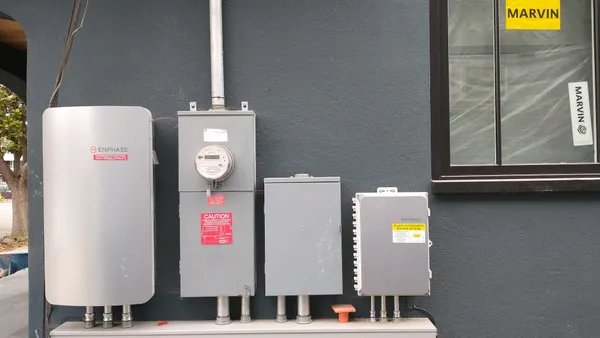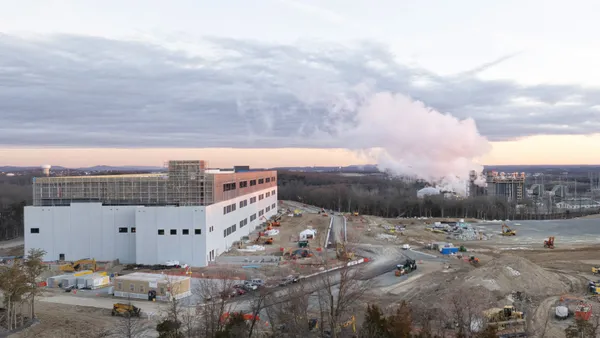Dive Brief:
- By the end of 2020, cumulative microgrid capacity in North America will reach 2.8 GW, with significant expansion anticipated on the renewables side according to new research from Greentech Media.
- Investment will top $829 million annually, the firm estimated, driven by flexible energy solutions gaining traction in areas beyond the West Coast, Southwest and Northeast.
- While fuel-based generators currently make up almost all microgrid capacity, within the next five years that mix is expected to swing to more than a quarter renewables, most of it solar energy.
Dive Insight:
Microgrids, still a relatively new aspect of the North American energy landscape, are poised for significant growth in the next five years.
“The microgrid market is undergoing a transformation from a niche application intended for military bases and remote communities to a grid modernization tool for utilities, cities, communities and public institutions,” GTM said in its paper. According to the research, installed capacity will approach 3 GW by 2020, an in crease of more than 125% relatively to today's figures.
Generation investments will make up the largest share of anticipated expenditures, about 40%, and is expected to cumulatively reach $1.4 billion. Distributed enhancements will make up 20% of expenses, more than $700 million. And while so far most of the microgrids have been based around traditional fuels, GTM said renewables are posied to make up more than a quarter of capacity in the near future.
Fossil fuels — led by diesel generators — currently account for about 90% of microgrid capacity, while renewables come in at just 6%.
“Flexible microgrid solutions are becoming a significant component of renewable integration strategies in regions extending beyond high penetration states such as Hawaii and California,” the firm said. While the Southwest and West Coast currently account for more than 900 MW of capacity, the Northeast has more than 550 MW of capacity and the Southeast adds about 275 MW.














